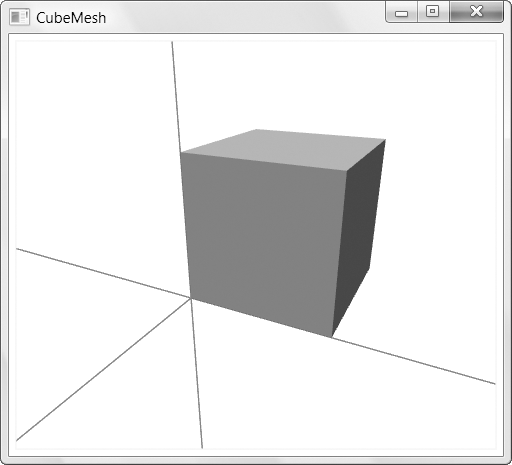Deeper into 3-D
Going to the trouble of cameras, lights, materials, and mesh geometries is a lot of work for an unimpressive triangle. However, you've now seen the bare bones of WPF's 3-D support. In this section, you'll learn how to use it to introduce more complex shapes.
Once you've mastered the lowly triangle, the next step up is to create a solid, faceted shape by assembling a small group of triangles. In the following example, you'll create the markup for the cube shown in Figure 23-8.
A 3-D cube

NOTE
You'll notice that the edges of the cube in Figure 23-8 have smooth, anti-aliased edges. Unfortunately, if you're rendering 3-D on Windows ...
Get Pro WPF in C# 2008: Windows Presentation Foundation with .NET 3.5, Second Edition now with the O’Reilly learning platform.
O’Reilly members experience books, live events, courses curated by job role, and more from O’Reilly and nearly 200 top publishers.

